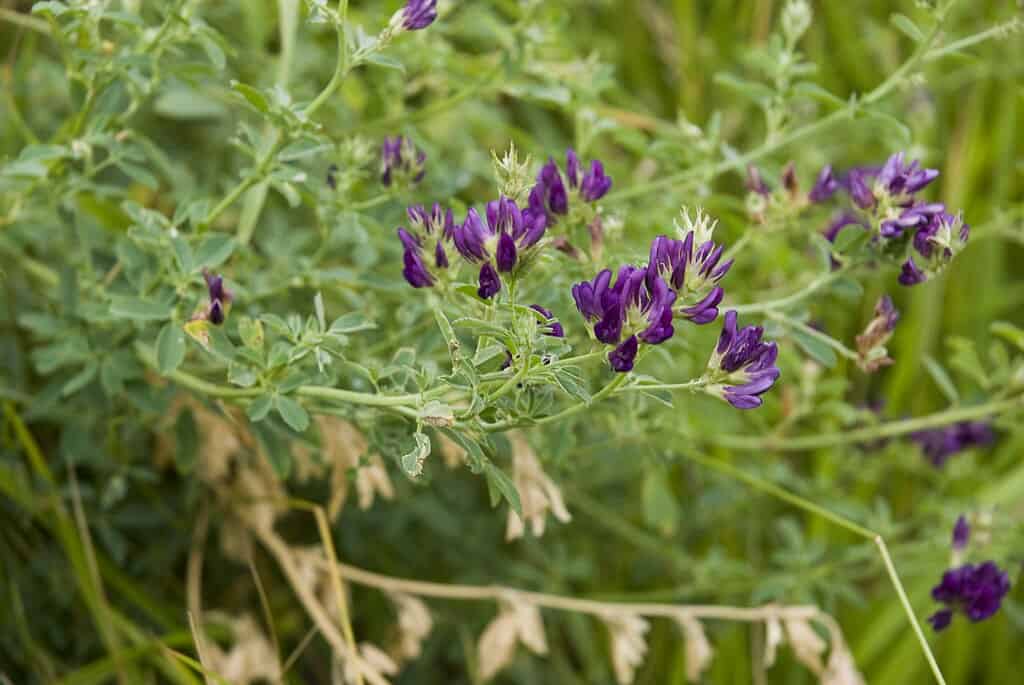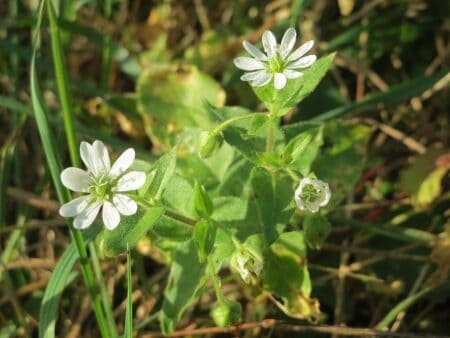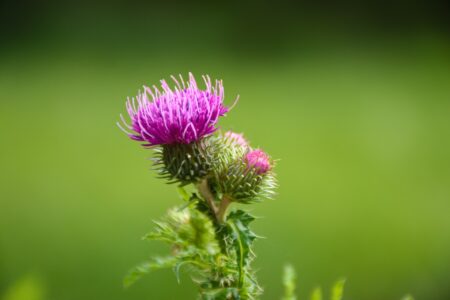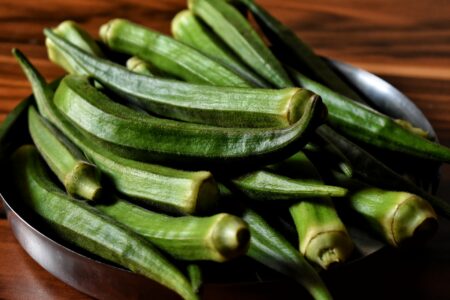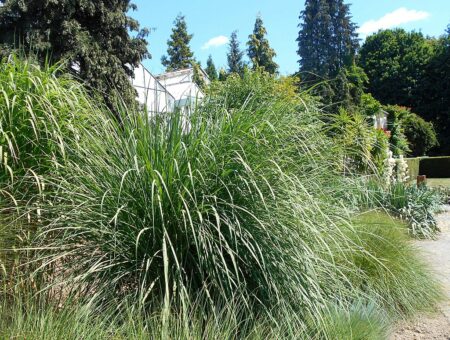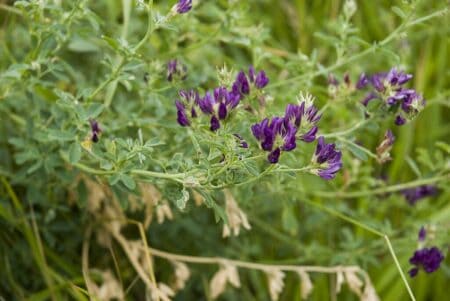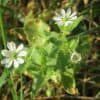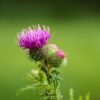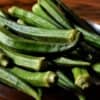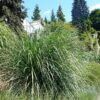Source: Wikimedia
Have you ever thought about growing your own fresh alfalfa but weren’t sure where to begin?
Alfalfa is a nutrient-packed green that offers a lot of perks for people and animal feed.
However, growing a nice thick patch takes some trial and error.
This guide will go over all the fundamentals of growing your alfalfa, from planting the seeds to reaping what you sow, so you’ll be well-positioned to benefit from this super grass.
What Is Alfalfa Grass?

Alfalfa grass, also known by its scientific name Medicago sativa, is a perennial legume belonging to the pea family called Fabaceae.
This versatile plant has a high reputation for its nutritional value and is used widely in agriculture.
Alfalfa generally grows to be around three feet tall.
It’s a herbaceous plant with a deep root system that goes down several feet into the soil, allowing it to thrive in different conditions.
The compound leaves usually have three oval or long-pointed leaflets with jagged edges.
When it flowers, clusters of small colorful blooms appear ranging from purple, blue to yellow, depending on the variety.
The pretty flowers attract important pollinators like bees.
Some common alfalfa varieties include ‘Vernal,’ ‘Cayuse,’ and ‘Ladak.’
One of alfalfa’s best attributes is its exceptional nutritional content.
It’s rich in vitamins A, C, D, E, and K, plus minerals like calcium, magnesium, potassium, and phosphorus. It’s also valued for its protein.
Alfalfa also provides dietary fiber and chlorophyll, contributing to overall health benefits.
Growing and Caring for Alfalfa Grass

Here’s how to grow and care for Alfalfa grass.
Choose the Right Location
When it comes to planting your alfalfa, location is key. You’ll want to find the perfect sunny spot.
Full sun is important – alfalfa needs at least six hours of direct rays daily to thrive.
Somewhere with good airflow is also ideal. This helps keep the leaves and stems dry, minimizing mildew or other issues.
Prepare the Soil
Preparing the soil is one of the most important steps for successfully growing alfalfa grass.
It’s best to start cleaning the garden space at least a few weeks before planting.
Remove any existing weeds, plant debris, or other materials from the area.
Also, ensure the chosen area has proper drainage to prevent soggy roots.
Plant Seeds
Alfalfa can be propagated from seeds.
To do this, evenly scatter them across the ready dirt at about 15-20 pounds (7-9 kg) per acre (4000 square meters) to get a nice thick crop.
Lightly rake over the seeds and water well without covering them too deeply since they need sunlight to sprout up.
Plant them 1/4 to 1/2 inch (0.64-1.27 cm) deep and 12-18 inches apart (30-45 cm) in rows.
Keep the Soil Moist
Water is key for alfalfa seeds as they sprout in about a week.
Keep the dirt consistently moist during germination by checking daily. Later on, once the grass has taken root, cut back watering but soak deeply when the topsoil starts drying out.
Fertilize Occasionally
Alfalfa grabs nitrogen from the air and makes it accessible to plants. So, a little extra nitrogen is usually needed.
Give a well-rounded fertilizer to maintain robust alfalfa since other vitamins are vital while it catches nitrogen.
Cut it Back Periodically
Once established, mow or cut alfalfa every four to six inches to promote thicker growth and prevent flowering.
This also harvests it for hay if that’s your goal. A well-maintained alfalfa crop will be more productive and resistant to common challenges.
Enjoy the Greens
Your alfalfa should be ready to cut in about six to eight weeks, though timing varies with the weather.
For best quality and quantity, harvest when it’s just starting to flower.
Use a mower to chop the grass about an inch above the dirt.
Leave some length so the alfalfa can bounce back with more growth for additional cuttings later in the season.
Possible Problems of Alfalfa Grass
Here’s a list of possible problems and challenges you may encounter when growing alfalfa grass.
Fungal Diseases
Alfalfa faces risks from harmful fungi in the soil.
Purple leaf spot creates purple-colored blotches that weaken them over time, while downy mildew stunts new foliage with a fluffy white-grey mold.
You should check regularly for such fungal attacks and practice good field sanitation.
Also, consider growing resistant varieties and use fungicides if infections become severe.
Pests
Alfalfa attracts several sucking pests that can weaken them.
These include aphids, which can gather on leaves and stems to feed on sap, while plant bugs poke foliage to drink nutrients.
Their feeding and excretions sap energy from plants.
If spotted early, spraying strong water jets or applying insecticidal soap may help control infestations.
Root Diseases
Alfalfa roots can face fungal and nematode threats, such as fusarium wilt that prevents water from traveling, causing wilted leaves.
Cyst nematodes also stunted growth by infecting roots. Pythium can also invade wet soils and degrade root structure.
Planting resistant types and managing moisture to avoid these diseases below ground is advisable.
Nitrogen Deficiency
Alfalfa relies heavily on nitrogen to survive.
Yet signs like stunted growth and yellowed lower leaves can signal a nitrogen shortage.
You must ensure proper soil prep and occasional fertilizing to meet this crop’s high Nitrogen demands, as this deficiency stunts yields and longevity.
Conclusion
With just a bit of planning and maintenance, alfalfa grass is remarkably rewarding to grow.
Not only will you gain a bountiful, natural source of nutrition for your family and animals, but alfalfa also enriches your soil with nitrogen fixation.
We hope you now feel equipped to embark on your alfalfa adventure!

